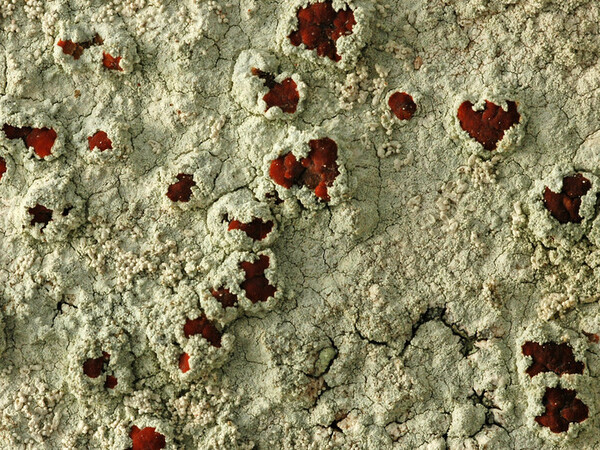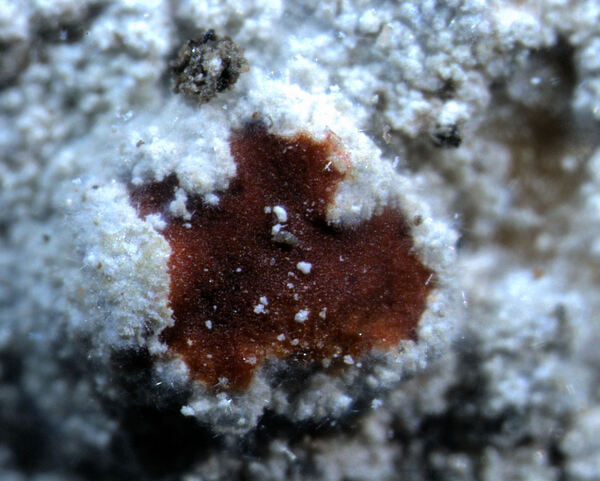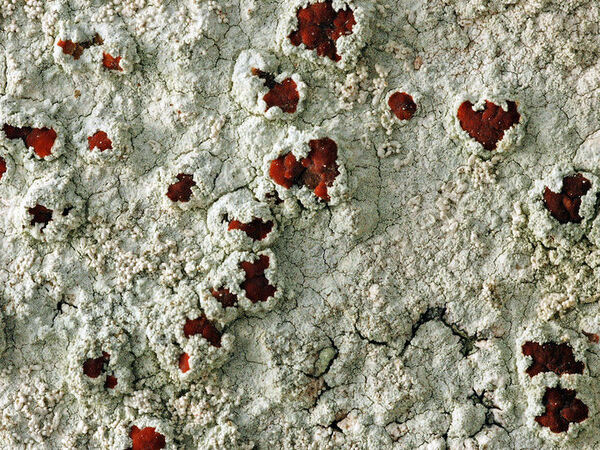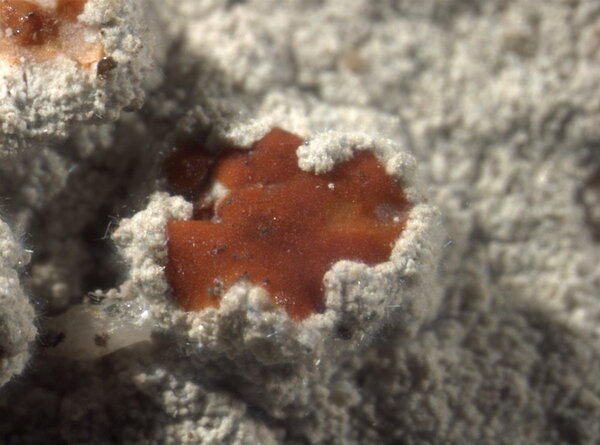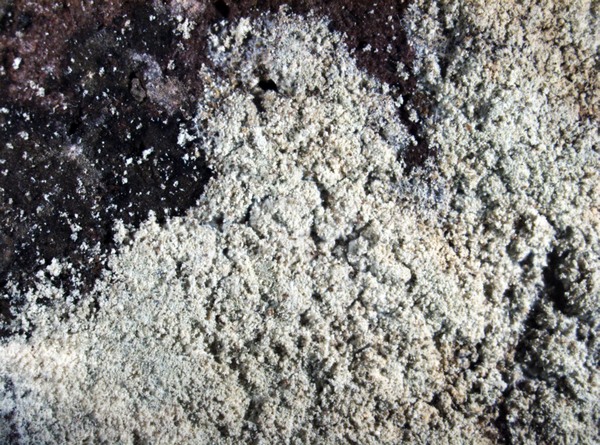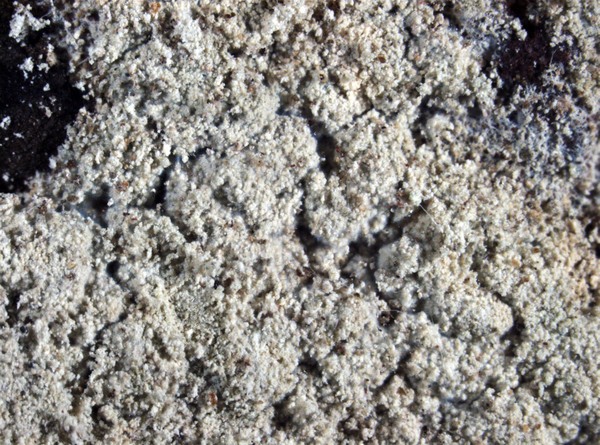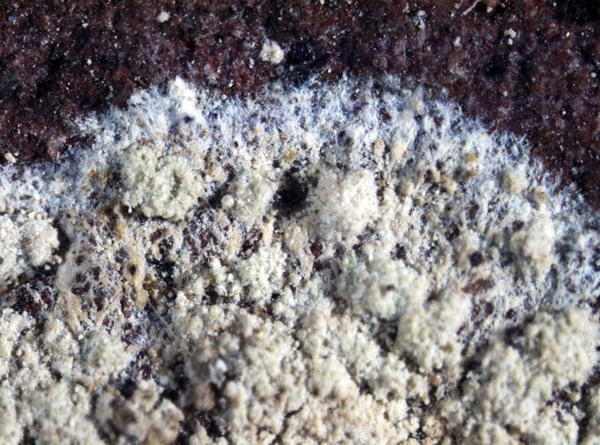Haematomma ochroleucum (Neck.) J.R. Laundon var. ochroleucum
Lichenologist, 4: 300, 1970. Basionym: Lichen ochroleucus Neck. - Meth. Muscor.: 52, 1771.
Synonyms: Haematomma coccineum (Dicks.) Körb.; Haematomma leiphaemium (Ach.) Zopf; Haematomma vulgare A. Massal.; Lecanora haematomma (Ach.) Röhl. p.p.; Lepra leiphaema (Ach.) Mérat; Lepra sulphurea auct. ital. p.p.
Distribution: N - Frl (Tretiach 2004), Ven (Lazzarin 2000b), TAA (Caniglia & al. 2002, Nascimbene & al. 2007b, 2022), Lomb, Piem (Isocrono & al. 2004, 2005b), Emil (Bouvet 2008, Fariselli & al. 2020), Lig (Castello & al. 1994, Giordani & al. 2002, Brunialti & Giordani 2003). C - Tosc (Loppi 1996, Loppi & De Dominicis 1996, Loppi & al. 1997, 1998b, 2002c, Putortì & Loppi 1999, Tretiach 2004, Loppi & Nascimbene 2010, Paoli & al. 2012), Umb (Ravera & al. 2006), Laz (Ruisi & al. 2005), Sar (Nöske 2000, Zedda 2002, Rizzi & al. 2011, Giordani & al. 2013). S - Camp (Ricciardi & al. 2000, Nimis & Tretiach 2004, Garofalo & al. 2010), Cal (Puntillo 1996, Incerti & Nimis 2006), Si.
Description: Thallus crustose to subleprose, episubstratic, yellowish green, forming large patches delimited by a cottony, fimbriate, whitish prothallus. Soredia abundant, granulose, 30-120 µm across, finally covering almost the entire thallus surface, giving it a subleprose appearance. Apothecia rare in epiphytic samples, more common in epilithic ones, lecanorine, 0.5-3 mm diam., at first immersed in the thallus, then subsessile and finally often immarginate, with a scarlet red disc and a sorediate thalline margin. Proper exciple very thin; epithecium scarlet red, K+ violet-red; hymenium colourless, K/I+ blue; paraphyses richly branched, especially in upper part; hypothecium colourless. Asci 8-spored, with an amyloid apical dome, approaching the Lecanora-type. Ascospores 3-7-septate, hyaline, fusiform, 30-70 x 5-7 µm. Pycnidia immersed, red in upper part, c. 0.2 mm diam. Conidia thread-like, strongly curved, 12-20 x 0.5-0.7 μm. Photobiont: chlorococcoid. Spot tests: thallus and soredia K+ pale yellow then brownish, C-, KC+ pale yellow, P+ pale yellow, UV-; disc of apothecia and top of pycnidia K+ dark purple-red. Chemistry: thallus with usnic acid, atranorin, zeorin, and porphyrilic acid; apothecia and pycnidia with anthraquinones (haematommone).Note: a mild-temperate species found on steeply inclined to somehow rain-protected and shaded surfaces of siliceous rocks, but also on bark (most records from bark, however, are likely to refer to Verseghya thysanophora); most common, and sometimes very abundant, in Tyrrhenian Italy (e.g. covering vast portions of the north-facing basalt strips of the cathedral of Orvieto).
Growth form: Crustose
Photobiont: green algae other than Trentepohlia
Reproductive strategy: mainly asexual, by soredia, or soredia-like structures (e.g. blastidia)
Most common in areas with a humid-warm climate (e.g. most of Tyrrenian Italy)
In underhangs rarely wetted by rain
Commonnes-rarity: (info)
Alpine belt: absent
Subalpine belt: absent
Oromediterranean belt: absent
Montane belt: extremely rare
Submediterranean belt: extremely rare
Padanian area: absent
Humid submediterranean belt: common
Humid mediterranean belt: rather common
Dry mediterranean belt: absent
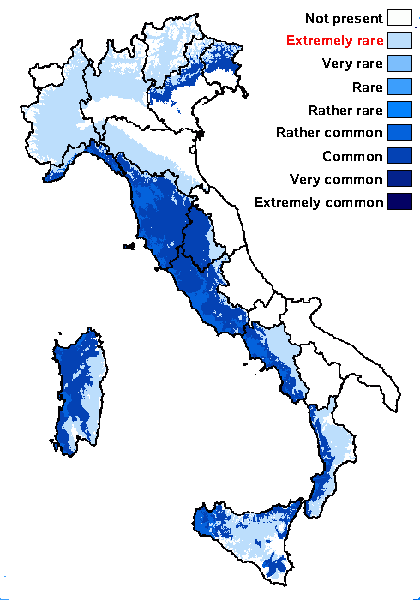
Predictive model
Herbarium samples

Courtesy Danièle et Olivier Gonnet - Source: https://www.afl-lichenologie.fr/Photos_AFL/Photos_AFL_H/Haematomma_ochroleucum_ochr.htm
France, Pointe du Raz - 18/6/2012 - Finistère

Courtesy Danièle et Olivier Gonnet - Source: https://www.afl-lichenologie.fr/Photos_AFL/Photos_AFL_H/Haematomma_ochroleucum_ochr.htm
France, Pointe du Raz - 18/6/2012 - Finistère
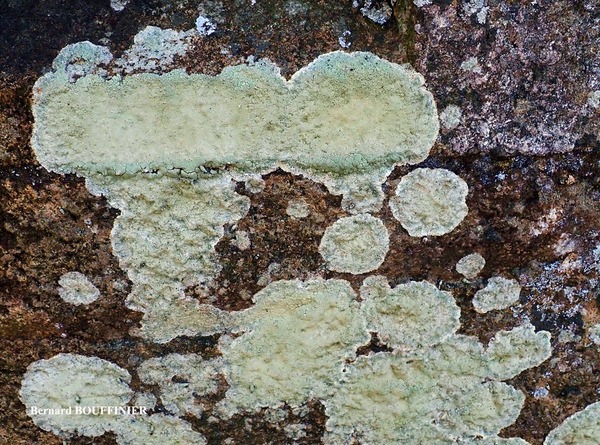
Bernard Bouffinier- Source: http://www.lichensmaritimes.org/index.php?task=fiche&lichen=261&lang=en
France, Daoulas

Bernard Bouffinier- Source: http://www.lichensmaritimes.org/index.php?task=fiche&lichen=261&lang=en
France, Kergoat
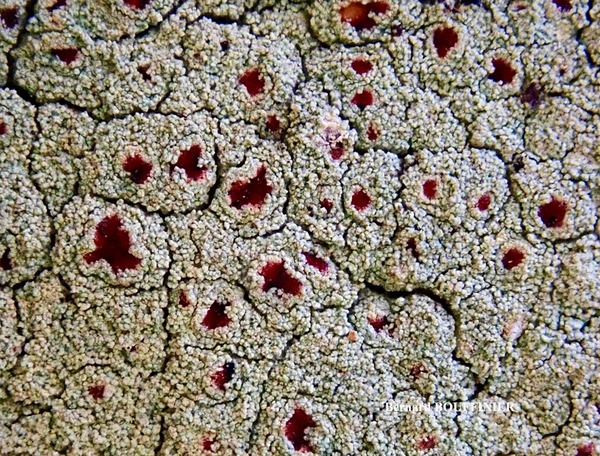
Bernard Bouffinier- Source: http://www.lichensmaritimes.org/index.php?task=fiche&lichen=261&lang=en
France, Daoulas

Jacques Haine - Source: http://www.lichensmaritimes.org/index.php?task=fiche&lichen=261&lang=en
France, Kergoat
Growth form: Crustose
Photobiont: green algae other than Trentepohlia
Reproductive strategy: mainly asexual, by soredia, or soredia-like structures (e.g. blastidia)
Most common in areas with a humid-warm climate (e.g. most of Tyrrenian Italy)
In underhangs rarely wetted by rain
Commonnes-rarity: (info)
Alpine belt: absent
Subalpine belt: absent
Oromediterranean belt: absent
Montane belt: extremely rare
Submediterranean belt: extremely rare
Padanian area: absent
Humid submediterranean belt: common
Humid mediterranean belt: rather common
Dry mediterranean belt: absent

Predictive model
| Herbarium samples |

Courtesy Danièle et Olivier Gonnet - Source: https://www.afl-lichenologie.fr/Photos_AFL/Photos_AFL_H/Haematomma_ochroleucum_ochr.htm
France, Pointe du Raz - 18/6/2012 - Finistère

Courtesy Danièle et Olivier Gonnet - Source: https://www.afl-lichenologie.fr/Photos_AFL/Photos_AFL_H/Haematomma_ochroleucum_ochr.htm
France, Pointe du Raz - 18/6/2012 - Finistère

Bernard Bouffinier- Source: http://www.lichensmaritimes.org/index.php?task=fiche&lichen=261&lang=en
France, Daoulas

Bernard Bouffinier- Source: http://www.lichensmaritimes.org/index.php?task=fiche&lichen=261&lang=en
France, Kergoat

Bernard Bouffinier- Source: http://www.lichensmaritimes.org/index.php?task=fiche&lichen=261&lang=en
France, Daoulas

 INDEX FUNGORUM
INDEX FUNGORUM
 GBIF
GBIF
 DOLICHENS
DOLICHENS
